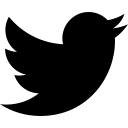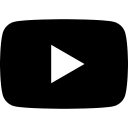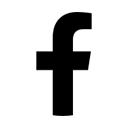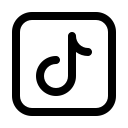Acne Vs. Pimples: How To Identify & Eliminate Your Zits
Article Outline:
1. Acne basics.
2. Acne and pimple identification.
3. What causes breakouts?
4. How to reduce breakouts.
5. Acne and pimple treatments.
Acne effects 40 to 50 million people in the United States alone. Unless you are part of that lucky few who have seemingly perfect skin, you have at some point had to deal with pesky bumps and blemishes on your skin. Here’s everything you need to know to identify which acne type is affecting you, and how to get rid of it fast.
The Basics
First things first, here are the main things you need to know about acne, pimples, and zits.
- Acne is actually the name given to a group of skin conditions, while zits and pimples are simply symptoms. So that means that while everyone experiences a pimple or zit from time to time, not everyone truly suffers from acne.
- Pimples and zits are one in the same. They are simply just two different names for the same condition. Meaning, all zits are pimples, and all pimples are zits.
- Pimples and zits are acne lesions that are formed when oil, bacteria, and dead skin cells clog the pores of your skin.
Do You Really Have Acne?
In order to understand which skin ailment is affecting you, and figure out the best course of treatment, you first need to know exactly what you’re dealing with! Now we’re not scientists, but here are all the facts you need to know to decide whether you truly have acne, or just a few pimples to worry about!
Acne is characterized by persistent and recurring pimples and blemishes that are most commonly on the face, neck, chest, and back. The full name of this skin condition is acne vulgaris, which occurs when there are changes to your skin's pilosebaceous units, which are made up of the hair follicles and oil glands.

Image Courtesy Of BirchBox
There are three main types of acne including: Comedones, Inflammatory Acne, and Noduloystic Acne.
- Comedones are the most common type of acne, which you probably know better as whiteheads and blackheads.
- Inflammatory acne lesions are sometimes called papules or pustules, and are characterized by redness, inflamed skin, and a white, pus-filled cap covering the pore.
- Nodulocystic Acne is a very severe type of acne that leads to painful, swollen pimples as well as scarring. It can be easily identified as this type of acne is painful to the touch.
For all three of these acne types, it may be necessary to seek out attention from a licensed professional in order to obtain the best course of treatment. If you feel like your acne issue is more than just a few zits here and there, making an appointment with a reputable dermatologist is often the most effective form of treatment!
OK, It’s Just A Few Pimples
So, you’ve determined you don’t actually have an acne problem, just a few zits. Perfect! Dealing with a few pimples here and there is much easier than dealing with a skin condition like Acne. However, that doesn’t mean you shouldn’t be informed on how to eliminate them quickly and effectively. Here’s what you need to know about zits!
As mentioned earlier, pimples and zits form when bacteria, oil, and dead skin cells are pushed deep into the skin and clog your pores. This oil causes dead skin cells to stick to the surface of your skin, producing bacteria. People who experience recurring breakouts could have a higher presence of C. acnes, a tiny microbe that is to blame for the development of acne, present in their skin. When high levels of C. acnes are present, our immune system becomes aggravated, resulting in the red, noticeable, sometimes painful, annoyance we know as zits.
Now there’s a few different types of pimples, each of which has a different treatment option for fast removal. Here is a breakdown of the different types of pimples and how you can identify them:
- Pimples - A small pustule on the skin’s surface that develops when oil glands become clogged and infected. This leads to acne lesions filled with pus.
- Whiteheads - Comedos covered by a layer of skin that forms when skin cells and oil are trapped in a pore.
- Blackheads - Comedos that has been exposed to the air. The oil and skin cells’ exposure to air causes it to darken in color.
- Cysts - Painful, pus-filled lumps deep under the surface of the skin.
PRO TIP: Never to try to pop any type of pimple with your fingers. Always use a kit specifically designed for removing pimples. Also, DO NOT try to remove cystic acne at home. A professional is required for any type of cystic acne removal!
What Causes Breakouts?
There are a few factors that might be causing your breakouts, and unfortunately some are out of your control. Nevertheless, it is important to know what is triggering your acne in order to understand it. Here’s our list of things that could be causing your pimple struggles.
- Hormones: Although hormones causing acne are more attributed to women, hormones can also cause acne for men. When hormone levels change, acne may occur because of increased oil production.
- Genetics: Unfortunately, if your parents had acne there is a higher chance you will also experience acne. Thanks a lot mom and dad!
- Medications: Some drugs containing corticosteroids, testosterone, or lithium can cause acne.
- Diet: Studies have shown that milk and certain carbs and sugars can trigger acne.
- Stress: Stress doesn’t necessarily cause acne, but it can make it worse for skin already suffering from breakouts.
- Oil & Bacteria Introducers: Pressure from collars, hats, helmets, and backpack straps can cause oil buildup that will become trapped in the skin. Oil and bacteria can also be introduced to your skin from dirty hair and hands.
Tips For Reducing Breakout Frequency
Now that you’re an expert on acne, zits, and pimples, we can move on to the important part. How can you avoid breakouts in the first place? Here’s some simple tips you can follow to help avoid dealing with breakouts in the first place.
Have A Regular Skin Care Regime: Even when your acne is not bad, always wash your face twice daily with a facial cleaner. Using a great scrub brush is also way more effective at reducing your break outs than just using your hands.
Avoid Touching Your Face: You’d be surprised how often the average person touches their face throughout the day. You’d also be surprised, and probably a little grossed out, to know how much bacteria can be on your hands. Trust us on this one. If you can avoid it, don’t touch your face.
Eliminate Your Oily, Greasy Hair: You may be starting to see a pattern here. Anything that can introduce oil and bacteria to your face should be avoided. If your hair falls into your face or is long enough to touch you back, you should be aware of it. If your hair is dirty, oily, or sweaty, try to keep it up and out of your face or wash it regularly with a shampoo designed to remove oil and dirt in order to avoid introducing more bacteria to your skin.
Keep Your Screen Clean: Just like your hands, your cell phone screen can carry a lot of bacteria. Avoid pressing your phone to your face when using it and make sure to clean it regularly.
Use Non-Comedogenic Products On Your Face: Non-comedogenic means products that will not clog your pores. So, when looking for moisturizers, sunscreens, and hair products, look for ones that are non-comedogenic.
Shave Properly: Remember to never use a razor more than 3-5 times and clean it regularly. Not only will these keep your blade sharp and provide a close, pain-free shave, but will also reduce the amount of dirt and bacteria that ends up in your pores! Remember to finish off your shave by rinsing with cold water. This is going to quickly close your pores before oil and dirt has a chance to enter. A great aftershave balm is also a super easy way to eliminate irritation and reduce the number of ingrown hairs and zits that can occur after shaving.
Have A Healthy Diet: As mentioned before, having a high fiber diet and eating foods that reduce inflammation is your best bet when dealing with acne prone skin. Avoid milk, some carbs, and sugars.
De-Stress: Because stress can make acne even worse, it is important to work on yourself care. There is a lot you can do to combat stress including: exercise, yoga, and meditation. But of course, every person has different ways of destressing, so as long as they are healthy routes, do what works for you!
Drink Water: Staying hydrated is key to a healthy person and healthy skin!
Get Adequate Sleep: Sleep is essential to keeping every human healthy in general - especially when it comes to skin rejuvenation. Beauty rest is a real thing gentleman. Make sure to get enough sleep. Your skin will thank you!
Keep Your Body Clean: Guys breakouts happen in other places than your face. Body acne and bacne are real problems us gents have to contend with. So, make sure that you’re keeping that body clean. Now because reaching your back can be a bit of a challenge, that makes eliminating bacne fairly difficult. Grabbing yourself a long handle scrub brush to get those hard-to-reach areas is the easiest way to get back there and get your scrub on.
The Treatments
Repeat after us. DO NOT pop your pimples or zits with your fingers! We realize it is hard to resist the urge, but trust us, acne scars are just as annoying and noticeable as those zits and pimples. Using your fingers most times just introduces more dirt and oil to the site. This is the reason you many times need to pop that zit more than once. Instead grab yourself a great acne kit which is designed for popping those pimples effectively and more importantly, safely!

If your acne is flaring up, you should follow up your facial cleanser with an acne cream. When it comes to acne treatments and creams, you should know that they will dry out your skin, as they are meant to remove excess oil from your skin. However, sometimes a little dryness is a fair trade off for eliminating those pesky zits. Acne creams with Salicylic Acid or Benzoyl Peroxide are the most common, effective, and affordable treatment option.
If home treatments seem to not be helping, we do recommend you see a dermatologist who can help you to understand your condition better and, if needed, can prescribe you a medicated treatment.

Image Courtesy Of Meme Guy
There you have it gents, everything you need to know to get that acne under control and your skin looking amazing. Don’t forget prevention is key, so keep up your skin care routine and healthy habits even after those zits are long gone. It certainly isn’t easy, but eliminating acne and keeping it away is possible!
Make Sure To Check Out:
How To Eliminate Razor Burn & Ingrown Hairs
Solutions To Your Grooming Problems
← Older Post Newer Post →








